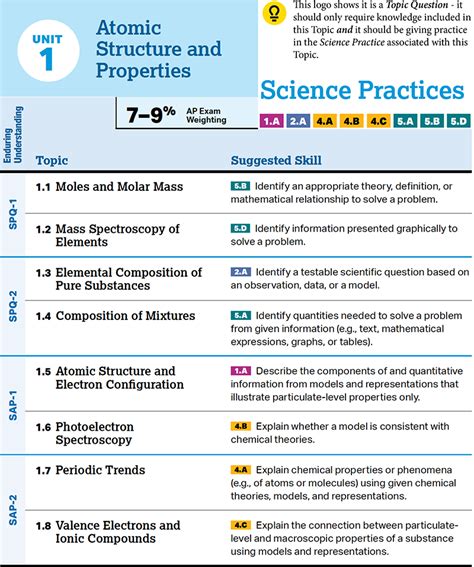Measurement and Uncertainty
- Significant Figures: Express numbers with the correct number of significant figures, considering zeros and rounding rules.
- Units of Measurement: Convert between SI units and other common units using dimensional analysis.
- Uncertainty in Measurement: Determine the absolute and relative uncertainties in experimental data and express results using the correct number of significant figures.
States of Matter
- Solids: Describe the properties of solids, including crystal structures (unit cells) and intermolecular forces.
- Liquids: Explain the properties of liquids, including surface tension, viscosity, and vapor pressure.
- Gases: Apply the Ideal Gas Law (PV=nRT) to calculate gas variables (pressure, volume, temperature, and moles).
- Phase Transitions: Understand the changes in energy and entropy associated with phase changes (melting, freezing, vaporization, condensation).
Solution Chemistry
- Concentration: Express concentration in various units (molarity, molality, mass percent, ppm).
- Colligative Properties: Predict the effects of solute concentration on boiling point elevation, freezing point depression, and osmotic pressure.
- Electrolytes: Classify compounds as electrolytes or non-electrolytes based on their ability to conduct electricity in solution.
Chemical Reactions
- Stoichiometry: Determine the quantitative relationships between reactants and products in chemical equations.
- Thermochemistry: Calculate the enthalpy change of reactions using Hess’s Law and calorimetry.
- Kinetics: Understand reaction rates and the factors that affect them (temperature, concentration, surface area).
- Equilibrium: Apply Le Chatelier’s Principle to predict how equilibrium shifts in response to changes in conditions (stressors).
Tips and Tricks
- Dimensional Analysis: Always check units to ensure your answer is dimensionally correct.
- Significant Figures: Carry significant figures through all calculations, rounding only at the final answer.
- Le Chatelier’s Principle: Remember the mnemonic “SALT” (stress increases, equilibrium shifts to counteract).
- Equilibrium Constant: Understand that the equilibrium constant is a measure of the extent of reaction at equilibrium, not the rate of reaction.
- Thermochemistry: Hess’s Law allows you to combine multiple reactions to calculate enthalpy changes for complex processes.
Common Mistakes to Avoid
- Mixing up significant figures and decimal places.
- Incorrectly using dimensional analysis, leading to incorrect units.
- Misinterpreting Le Chatelier’s Principle and predicting incorrect equilibrium shifts.
- Forgetting to convert between temperature units (Celsius vs. Kelvin).
- Making calculation errors due to rounding prematurely.
Step-by-Step Approach to Calculations
- Read the problem carefully and identify the relevant data.
- Convert any units to SI units (meters, grams, moles).
- Use stoichiometry or appropriate equations to determine the desired quantity.
- Calculate the result with the correct number of significant figures.
- Check your answer for dimensional correctness and reasonableness.
Applications of Chemistry in the Modern World
- Medicine: Developing new drugs, vaccines, and medical devices.
- Energy: Improving energy efficiency and developing sustainable energy sources.
- Materials Science: Creating advanced materials with tailored properties for various uses.
- Environmental Science: Addressing climate change, pollution control, and water treatment.
- Nanotechnology: Exploiting materials at the nanoscale to create innovative technologies in fields such as medicine, electronics, and energy.
Tables
| Physical Property | Unit | Measurement Tool |
|---|---|---|
| Mass | Grams | Balance |
| Volume | Liters | Graduated cylinder, burette |
| Temperature | Kelvin | Thermometer |
| Pressure | Pascals | Manometer |
| Density | Grams per cubic centimeter | Pycnometer |
| Colligative Property | Effect on Property |
|---|---|
| Boiling Point Elevation | Increases |
| Freezing Point Depression | Decreases |
| Osmotic Pressure | Increases |
| Type of Reaction | Products | Example |
|---|---|---|
| Synthesis | Two or more reactants combine | 2 H2 + O2 → 2 H2O |
| Decomposition | One reactant breaks down | 2 H2O → 2 H2 + O2 |
| Single Replacement | One element replaces another in a compound | Zn + 2 HCl → ZnCl2 + H2 |
| Double Replacement | Two ionic compounds exchange ions | NaCl + AgNO3 → AgCl + NaNO3 |
| Equilibrium Constant | Expression |
|---|---|
| Kp | Product partial pressures |
| Kc | Product concentrations |
| Kw | Autoionization of water |
